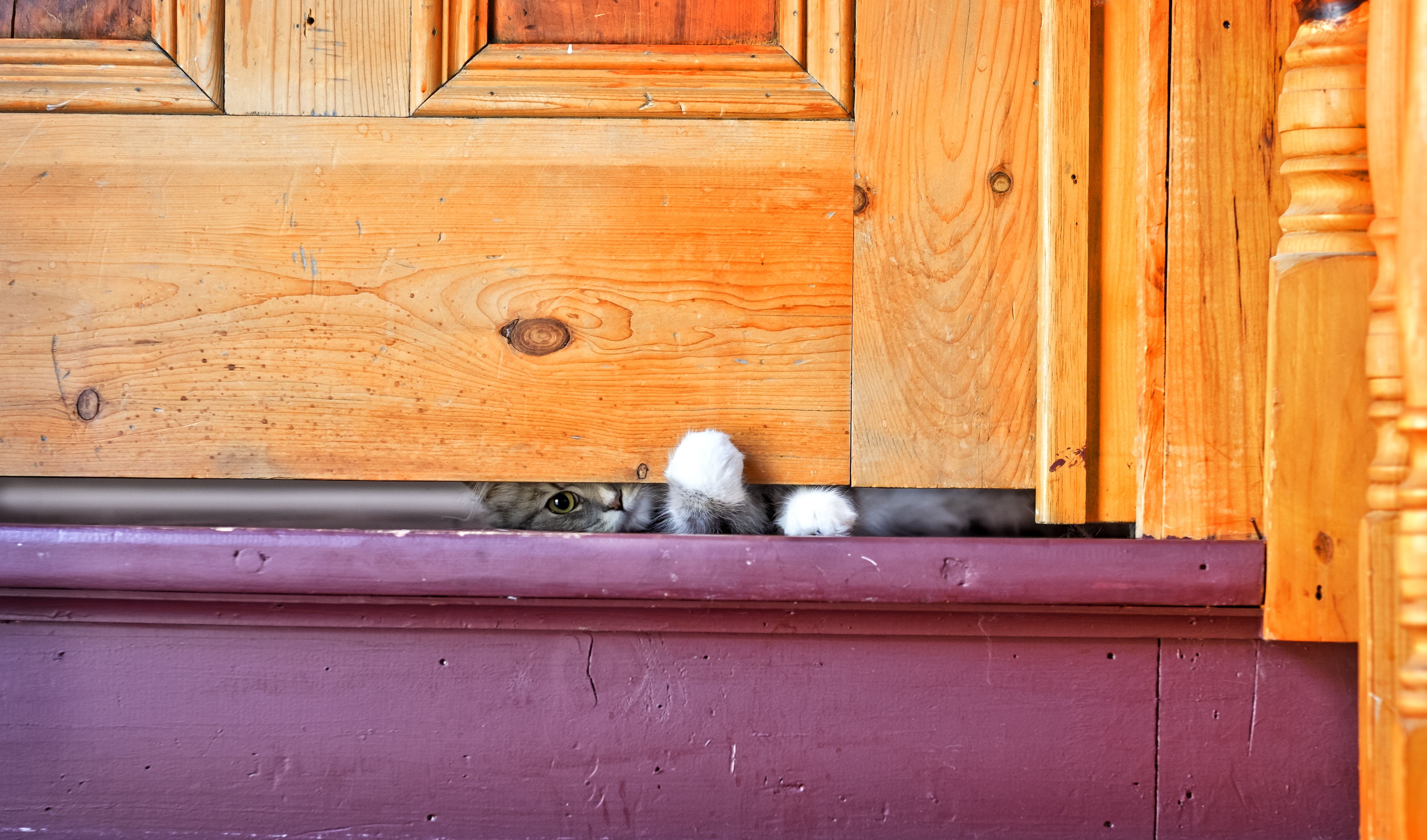
Introduce Your Resident Cat to a New Kitten with Less Stress
Adopting a new kitten is an exciting experience, but if you have a resident cat at home, they may not find it nearly as great as you do. Cats can be extremely territorial, and bringing home a playful kitten can throw a wrench in your older cat’s calm, daily routine.
Putting your resident cat and a new cat in close proximity right away could potentially end very badly, so it’s very important to set your cats’ relationship up for success from the start by slowly introducing them. This process doesn’t have to be stressful, and you don’t need to be worried that they will hate each other forever. Here’s how you can make the introductions as easy and stress-free as possible.
Take it slow
The first thing to remember when planning an introduction between two cats is that, in most cases, this process won’t happen overnight. Some cats take to each other right away, but more often than not, it can take a few weeks to a few months for two cats to warm up to each other.
Everything you do when introducing your new kitten to your home and resident cat should be slow. Monitor each step closely and only move forward when your cats respond well. You can’t force them to like each other, and trying to do so can cause severe stress or anxiety for both cats!
Maintain your resident cat’s routine
The next important thing to remember is that your resident cat came first, and you should try to minimize disruptions to their routine as much as possible. New kittens, especially, can cause jealousy and aggression in older cats because kittens tend to get a lot of attention and can be quite rambunctious.
Making your new kitten feel comfortable in your home is important, of course, but you’ll want to make sure your resident cat still receives its daily doses of love and affection and isn’t suddenly locked out of their favorite room of the house or has their schedule completely altered. Making sure your resident cat feels loved and cared for is integral to this process.
Keep them separated

When you first bring your new kitten home, you’ll want to make sure you’ve prepared a small area of the home for them to live in for at least a few days. This space should be behind a door—ideally in a small bedroom or bathroom—where they can settle in while remaining separated from your resident cat. All of your new cat’s essentials will live in this room, and you should go in regularly for playtime and cuddles.
You don’t want your resident and new cat to see each other quite yet, and they definitely should not be left together unsupervised. The two unfamiliar cats could get into a fight and hurt one another—or worse.
Swap scents
With your new kitten settled into a cozy space of their own, you can begin acclimating the two cats to each other’s scents. Scent means a lot in the world of cats, allowing our furry friends to learn about the other pet and become used to their presence without coming face to face.
To do this, you can swap a few items from your new kitten’s and your resident cat’s spaces, like their beds or blankets. You can even take a washcloth or sock and gently rub one cat’s cheek with it to pick up their scent from glands in that area of the face, then leave the item where the other cat likes to hang out, so they get more familiar.
Next, you can allow the two cats to trade places temporarily. Put your resident cat in another room, then place your new kitten in their carrier. Put the resident cat in the new cat’s space while allowing your new kitten to roam around the house and explore. This allows your new cat to get familiar with the rest of the house and both cats to get even more familiar with each other’s scent.
Supervised meetings
After both cats have had some time to explore each other’s spaces and get familiar with their scents over the course of a few days, you can try introducing them for some supervised play time. Introducing them during mealtime, where you feed each cat in their separate bowl in the same room, may be a good start, since the desire for food can serve as a distraction.

When you bring your cats together to meet, do so in a small, “neutral” room, ideally without a lot of furniture or places for the cats to run and get stuck. Watch the two cats closely during the encounter and be prepared to separate them using a blanket or piece of cardboard if things get intense.
The cats might hiss or growl at first—this is normal and actually useful for your new cat to learn that your resident cat is “alpha” in the house. If the two cats start to fight, you should absolutely not let them fight it out, but don’t try to physically separate them or you might get hurt yourself! Instead, shake a can full of coins or clap your hands loudly to scare them away. Then, return the cats to their usual places in the home until the next time you decide to have them meet. Give them treats as a reward for good behavior.
Over time, you can gradually increase the length of these supervised meetings and monitor how the two cats get along. Eventually, they should be able to exist peacefully in the same room and fall into routines together.
If months go by and your furry friends still aren’t getting along, you may want to consult a professional for assistance in improving their behavior around one another.


